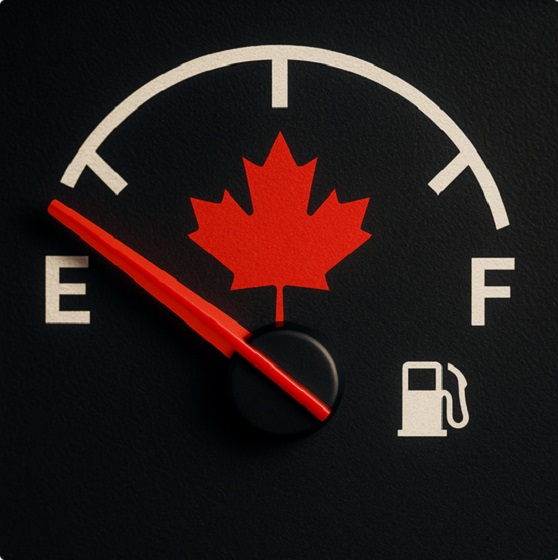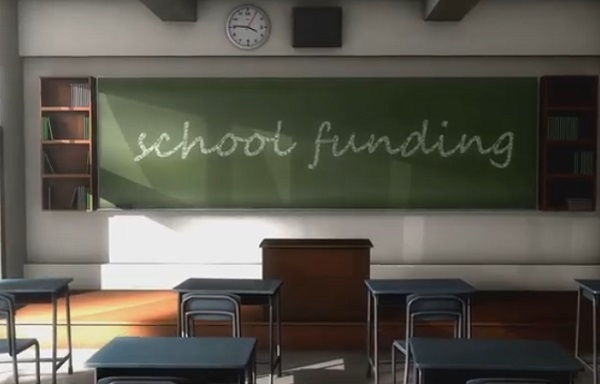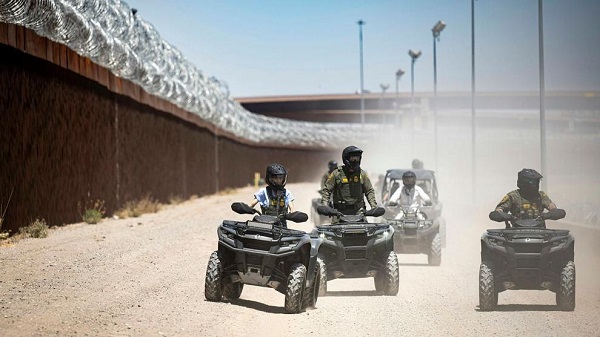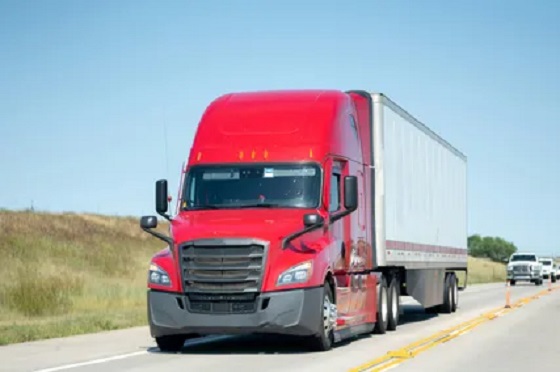COVID-19
There are no licensed COVID shots for kids under 12 – but CDC wants babies to get 3 Pfizer shots by 9 months
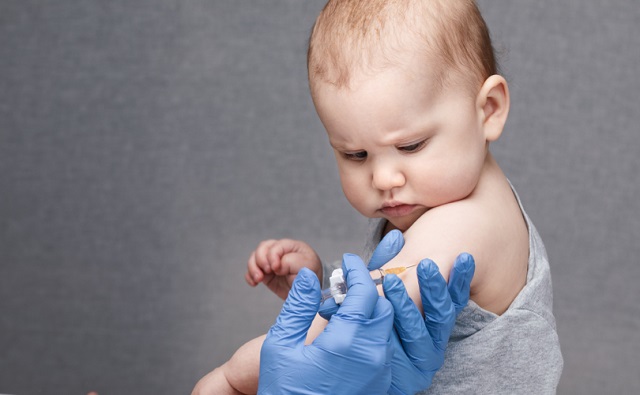
From LifeSiteNews
By and
“This is an insult to people’s intelligence,” she said, “I pray that parents will have the good sense to say no to these dangerous and unnecessary shots for babies.”
Nine-month-old babies must receive multiple doses of an unlicensed mRNA COVID-19 vaccine to be considered “up to date” with their COVID-19 vaccination, according to the Centers for Disease Control and Prevention (CDC).
The CDC’s updated guidance, issued August 30, states that children – as young as 6 months old – should get either two doses of the 2024-2025 Moderna vaccine or three doses of the 2024-2025 Pfizer-BioNTech vaccine.
If getting the new Pfizer shot, the baby is supposed to receive the first dose at 6 months, the second dose three weeks later and the third dose at least eight weeks after the second dose – meaning, that by 9 months old, babies are supposed to have received three Pfizer shots.
If getting the latest Moderna shot, the CDC recommends babies get the first dose at age 6 months and the second dose a month later.
The latest Pfizer and Moderna COVID-19 shots for children under 12 are unlicensed in the U.S. The U.S. Food and Drug Administration (FDA) has granted only emergency use authorization (EUA) for the vaccines.
Children’s Health Defense (CHD) CEO Mary Holland told The Defender, “The earlier COVID shots have been proven unsafe and ineffective. Now we’re asked to believe that newer versions are miraculously safe and effective?”
“This is an insult to people’s intelligence,” she said, “I pray that parents will have the good sense to say no to these dangerous and unnecessary shots for babies.”
As of July 28, 37,814 deaths following COVID-19 vaccination had been reported to VAERS, the Vaccine Adverse Event Reporting System, run by the FDA and CDC.
Of those, 187 reports were for children and teens under 18. Nearly 13,000 reports listed the age as “unknown.”
VAERS analyst and expert Albert Benavides recently told The Defender he believes VAERS is “throttling” and underreporting deaths of all ages following COVID-19 vaccination.
Meanwhile, the CDC continues to tell the public that COVID-19 vaccines are “safe and effective.”
CDC ‘absolutely misleading’ public on safety of EUA vaccines
Holland said the CDC is “absolutely misleading” the public by asserting that COVID-19 EUA vaccines are safe and effective because EUA vaccines are not held to the same safety or efficacy standards as licensed vaccines.
“By law,” she explained, “EUA products ‘may be effective,’ and they have not undergone the safety testing required to permit licensing.”
“This is one more horrific example of the CDC putting profits before people and acting as an unethical arm of Big Pharma’s marketing operation,” Holland added.
CHD Chief Scientific Officer Brian Hooker agreed. “It is criminal that these untested vaccines are being recommended to infants and children, especially given the fraudulent tactics to market them to an unsuspecting public,” Hooker told The Defender.
There’s no licensed COVID vaccine for kids under 12
There are still no licensed COVID-19 vaccines available for children under 12, Hooker said – so all COVID-19 vaccines given to young kids are EUA products.
The FDA’s website on EUA for medical products states that EUA vaccines only have to meet the standard of “may be effective” as long as if, “based on the totality of the scientific evidence, it is reasonable to believe that the product may be effective for the specified use.”
“The ‘may be effective’ standard for EUAs provides for a lower level of evidence than the ‘effectiveness’ standard that FDA uses for product approvals,” the website states.
Before a vaccine can be fully licensed, the vaccine maker typically is required to conduct numerous clinical trials to demonstrate that the product is safe. However, the safety requirements for EUA are more flexible.
According to the FDA:
The amount and type(s) of safety information that FDA recommends be submitted as part of a request for an EUA will differ depending upon a number of factors, including whether the product is approved for another indication and, in the case of an unapproved product, the product’s stage of development.
Despite this, the first statement on the CDC’s “6 Things to Know about COVID-19 Vaccination for Children” says, “COVID-19 vaccination for children is safe.”
Risks outweigh benefits for kids
Hooker said the CDC’s actions are especially problematic as, historically, the meaning of “safe” has been interpreted by regulatory authorities as meaning that the benefits of a drug outweigh its risks.
“With the risk to children of dying from a COVID-19 infection being statistically zero, it is unclear if there is any benefit,” he said.
Meanwhile, the CDC still claims that “while adverse reactions are rare, the benefits of COVID-19 vaccination outweigh the known risks of COVID-19 and possible severe complications.”
Pfizer fact sheet more forthcoming about risks
For licensed vaccines, the CDC typically provides an official vaccine information statement (VIS) that describes the vaccine’s risks and potential benefits.
According to the CDC website, “Federal law requires that healthcare staff provide a VIS to a patient, parent, or legal representative before each dose of certain vaccines.”
However, for EUA COVID-19 vaccines, the CDC directs people to “fact sheets” – produced by the vaccine manufacturer, not the CDC, and authorized by the FDA – which detail the product’s risks and benefits.
There is no federal law requiring healthcare providers to share these fact sheets with patients, or parents of minors, before a COVID-19 vaccination.
“Pfizer’s own ‘fact sheet’ for its latest COVID-19 vaccine appears to give a more accurate picture [of the vaccine’s risks] than the CDC’s own websites,” Hooker said. “Shouldn’t the CDC be more a watchdog than Pfizer?”
For example, Pfizer’s fact sheet states, “A product authorized for emergency use has not undergone the same type of review by FDA as an FDA-approved product.”
The Pfizer fact sheet also acknowledges that its vaccine “may not protect everyone” and that reported side effects associated with the Pfizer vaccines include myocarditis and pericarditis.
Hooker pointed out that research has shown that vaccine-induced myocarditis, inflammation of the heart, and pericarditis, inflammation of the tissue surrounding the heart, can be fatal.
He urged parents to “read between the lines” when assessing the CDC’s COVID-19 vaccination recommendation for babies and children.
“Most of all,” he added, “use common sense to decide if the CDC’s and the FDA’s logic is sound.”
This article was originally published by The Defender – Children’s Health Defense’s News & Views Website under Creative Commons license CC BY-NC-ND 4.0. Please consider subscribing to The Defender or donating to Children’s Health Defense.
COVID-19
Freedom Convoy leader Tamara Lich says ‘I am not to leave the house’ while serving sentence
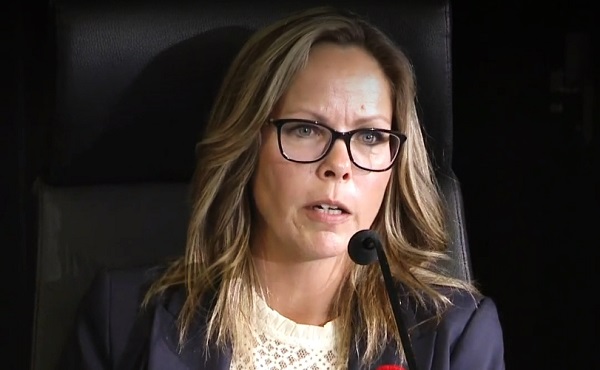
From LifeSiteNews
‘I was hoping to be able to drop off and pick up my grandsons from school, but apparently that request will have to go to a judge’
Freedom Convoy leader Tamara Lich detailed her restrictive house arrest conditions, revealing she is “not” able to leave her house or even pick up her grandkids from school without permission from the state.
Lich wrote in a X post on Wednesday that this past Tuesday was her first meeting with her probation officer, whom she described as “fair and efficient,” adding that she was handed the conditions set out by the judge.
“I was hoping to be able to drop off and pick up my grandsons from school, but apparently that request will have to go to a judge under a variation application, so we’ll just leave everything as is for now,” she wrote.
Lich noted that she has another interview with her probation officer next week to “assess the level of risk I pose to re-offend.”
“It sounds like it’ll basically be a questionnaire to assess my mental state and any dangers I may pose to society,” she said.
While it is common for those on house arrest to have to ask for permission to leave their house, sometimes arrangements can be made otherwise.
On October 7, Ontario Court Justice Heather Perkins-McVey sentenced Lich and Chris Barber to 18 months’ house arrest after being convicted earlier in the year convicted of “mischief.”
Lich was given 18 months less time already spent in custody, amounting to 15 1/2 months.
As reported by LifeSiteNews, the Canadian government was hoping to put Lich in jail for no less than seven years and Barber for eight years for their roles in the 2022 protests against COVID mandates.
Interestingly, Perkins-McVey said about Lich and Barber during the sentencing, “They came with the noblest of intent and did not advocate for violence.”
Lich said that her probation officer “informed me of the consequences should I breach these conditions, and I am not to leave the house, even for the approved ‘necessities of life’ without contacting her to let her know where I’ll be and for how long,” she wrote.
“She will then provide a letter stating I have been granted permission to be out in society. I’m to have my papers on my person at all times and ready to produce should I be pulled over or seen by law enforcement out and about.”
Lich said that the probation officer did print a letter “before I left, so I could stop at the optometrist and dentist offices on my way home.”
She said that her official release date is January 21, 2027, which she said amounts to “1,799 days after my initial arrest.”
As reported by LifeSiteNews, Lich, reflecting on her recent house arrest verdict, said she has no “remorse” and will not “apologize” for leading a movement that demanded an end to all COVID mandates.
LifeSiteNews reported that Conservative Party leader Pierre Poilievre offered his thoughts on the sentencing, wishing them a “peaceful” life while stopping short of blasting the sentence as his fellow MPs did.
In early 2022, the Freedom Convoy saw thousands of Canadians from coast to coast come to Ottawa to demand an end to COVID mandates in all forms. Despite the peaceful nature of the protest, Trudeau’s government enacted the never-before-used Emergencies Act (EA) on February 14, 2022.
COVID-19
The Trials of Liberty: What the Truckers Taught Canada About Power and Protest

Half the country still believes the convoy was a menace; the other half thinks it was a mirror that showed how fragile our freedoms had become.
This Thanksgiving I am grateful for many things. The truckers who stood up to injustice are among them.
When the first rigs rolled toward Ottawa in January 2022, the air was sharp, but not as sharp as the mood of the men and women behind the wheels. They were not radicals. Seeing a CBC a campaign of disinformation about them begin as soon as their trek started, even when Ottawa political operatives hadn’t yet heard, I started following several of them on their social media.
They were truckers, small business owners, independent contractors, and working Canadians who had spent two years hauling the essentials that kept a paralyzed nation alive. They were the same people politicians, including Prime Minister Trudeau, had called “heroes” in 2020. By 2022, they had become “threats.”
The Freedom Convoy was born from exhaustion with naked hypocrisy. The federal government that praised them for risking exposure on the road now barred the unvaccinated from crossing borders or even earning a living. Many in provincial governments cheered Ottawa on. The same officials who flew to foreign conferences maskless or sat in private terraces to dine, let’s recall, still forced toddlers to wear masks in daycare. Public servants worked from home while police fined citizens for walking in parks.
These contradictions were not trivial; they were models of tyrannical rule. They told ordinary people that rules were for the ruled, not for rulers.
By late 2021, Canada’s pandemic response had hardened into a hysterical moral regime. Compliance became a measure of virtue, not prudence. Citizens who questioned the mandates were mocked as conspiracy theorists. Those who questioned vaccine efficacy were treated as fools; those who refused vaccination were treated as contagious heretics. Even science was no longer scientific. When data showed that vaccines did not prevent transmission, officials changed definitions instead of policies. The regime confused authority with truth. One former provincial premier just this week was still hailing the miracle of “life-saving” COVID vaccines.
For truckers, the breaking point came with the federal vaccine mandate for cross-border transport. Many had already complied with provincial rules and workplace testing. Others had recovered from COVID and had natural immunity that the government refused to recognize. To them, the new rule was not about safety; it was about humiliation. It said, “Obey, or you are unfit to work.”
So they drove.
Donna Laframboise, one of the rare journalists who works for citizens instead of sponsors, described the convoy in her book Thank You, Truckers! with gratitude and awe. She saw not a mob but a moral statement. She showcased for us Canadians who refused to live by lies. Their horns announced what polite society whispered: the emergency had become a creepy habit, and the habit had become a tool of control.
When the convoy reached Ottawa, it was messy, loud, and human. There was singing, prayer, laughter, dancing and some foolishness, but also remarkable discipline. For three weeks, amid frigid temperatures and rising tension, there were no riots, no arsons, no looting. In a country that once prized civility, that should have earned respect.
Instead, it attracted the media’s and government’s contempt.
The Trudeau government, rattled by its own public failures, sprung to portray the protest as a national security threat. Ministers invoked language fit for wartime. The Prime Minister, who had initially fled the city claiming to have tested positive, returned to declare that Canadians were under siege by “racists” and “misogynists.” The accusations were as reckless as they were false. The government’s real grievance was not chaos but defiance.
Then came the Emergencies Act. Designed for war, invasion, or insurrection, it was now deployed against citizens with flags and thermoses. Bank accounts were frozen without charge or trial. Insurance policies were suspended. Police weilding clubs were unleashed against unarmed citizens. The federal government did not enforce the law; it improvised it.
A faltering government declared itself the victim of its citizens. The Emergency declaration was not a reaction to danger; it was a confession of political insecurity. It exposed a leadership that could not tolerate dissent and recast obedience for peace.
Haultain Research is a reader-supported publication.
To receive new posts, express your gratitude and support our work, consider becoming a a paid subscriber.
The convoy’s organizers, who kept the protest largely peaceful, were arrested and prosecuted as though they had plotted sedition. They were charged for holding the line, not for breaking it. The state’s behaviour was vindictive, not judicial. Prosecutors went along with it, and so did courts.
In a healthy democracy, such political trials would have shaken Parliament to its core. Legislators would have demanded justification for the use of emergency powers. The press would have asked precisely which law had been broken. Citizens would have debated the limits of government in times of fear, times which seem to continue just under the radar.
Not much of that happened.
Canada’s institutions have grown timid. The press is subsidized and more subservient. The courts happily defer to the administrative state. Law enforcement has learned to follow politics before principle. Academics have been lost for about generation. Under such conditions, how can citizens object to unscientific and coercive policies? What options remain when every channel of dissent—media, science, judiciary, and law enforcement—is captured or cowed?
The convoy’s protest, let’s remember, was not the first major disruption in the Trudeau years. A year earlier, Indigenous activists blocked rail lines and highways in solidarity with Wet’suwet’en hereditary chiefs opposed to a pipeline. The blockades cost the economy millions. They were called “a national conversation.” Few arrests, no frozen accounts, no moral panic.
In 2020, Black Lives Matter marches were cheered by politicians and news anchors. Some protests were peaceful, others destructive. Yet they were treated as expressions of justice, not extremism.
Even today, pro-Hamas Palestinian demonstrations that include violence and intimidation of Jewish citizens are tolerated with a shrug. The police stand back, bring them coffee, citing “the right to protest.”
Why, then, was the Freedom Convoy treated as a crisis of state?
In a liberal democracy, protest is not rebellion. It is a civic instrument, a reminder that authority is contingent. When a government punishes peaceful protest because it disapproves of the message, it turns democracy into décor.
The trials of the convoy organizers are therefore not about law but about legitimacy. Each conviction signals that protest is permitted only when it pleases the powerful. This is the logic of every soft tyranny: it criminalizes opposition while decorating itself with the vocabulary of rights. I see this daily in Nicaragua, my native land.
The truckers’ protest revealed what the pandemic concealed. The COVID regime was unscientific and incoherent. It punished truckers who worked alone in their cabs while allowing politicians to mingle maskless at conferences. It barred unvaccinated Canadians from air travel but allowed infected citizens to cross borders with the proper paperwork. It closed playgrounds and churches while keeping liquor stores open.
These contradictions were not mistakes; they were instruments of obedience. Each absurd rule tested how much submission people would endure.
The truckers said, “Enough.” I am grateful that they did.
For that, Chris Barber (Big Red) and Tamara Lich  are still being punished. Their trials have now concluded, save for possible appeals, yet their quiet defiance remains one of the few honest moments in recent Canadian history. It showed that courage is still possible, even the state seems to forbid reason.
are still being punished. Their trials have now concluded, save for possible appeals, yet their quiet defiance remains one of the few honest moments in recent Canadian history. It showed that courage is still possible, even the state seems to forbid reason.
The government’s response revealed the opposite: that fear, once politicized, is never surrendered willingly. The state that learned to rule through emergency will not soon unlearn it. They cling to its uses still.
Canada lives with the legacy of that winter today. The trials are finished, but the divisions persist. Half the country still believes the convoy was a menace; the other half thinks it was a mirror that showed how fragile our freedoms had become.
Trudeau’s government is no more, yet the spirit of his politics lingers. He did not create the divisions by accident. He cultivated them as a strategy of control. The country that left him behind is also less free, less trusting, and less united than it was before the horns sounded in Ottawa. Carney’s government is Trudeau’s heir.
The trials and sentencing measure the distance between the Canada we imagined and the one we inhabit.
The truckers’ convoy was imperfect, yet profoundly democratic. It stood for the right of citizens to say no to a government that had forgotten how to hear them. The echo of that refusal still moves down the Trans-Canada Highway. It is the sound of liberty idling in the cold, waiting for a green light that will not soon come.
This Thanksgiving, I am grateful for the abounding love and understanding in my life. I am grateful for my spirited children and their children. I am grateful for my nonagenarian father and for my siblings. I’m grateful for the legion of aunts, uncles, cousins, nieces and nephews on all sides of the family. I am grateful for loyal friendships and for my colleagues and coworkers who share the quest for a freer country. I’m grateful to my adoptive Alberta, and Albertans, also struggling to be strong and free.
I am grateful for the Truckers, wherever they came from, for their courage.
Haultain Research is a reader-supported publication.
To receive new posts, express your gratitude and support our work, consider becoming a a paid subscriber.
-
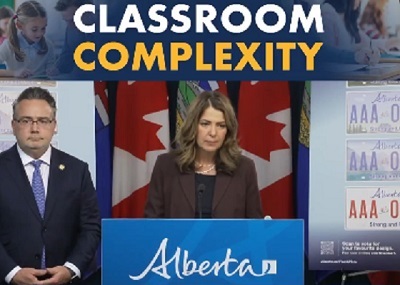
 Alberta2 days ago
Alberta2 days agoPremier Smith addresses the most important issue facing Alberta teachers: Classroom Complexity
-

 Alberta2 days ago
Alberta2 days agoAlberta taxpayers should know how much their municipal governments spend
-
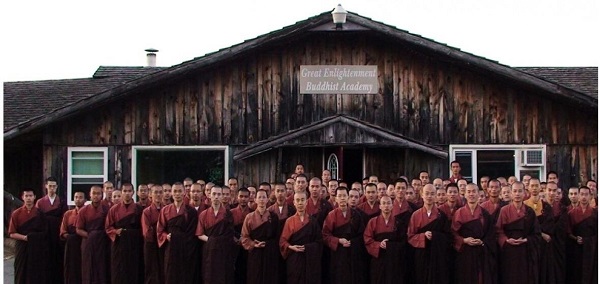
 espionage2 days ago
espionage2 days agoBreaking: P.E.I. Urges RCMP Probe of Alleged Foreign Interference, Money Laundering
-

 Business1 day ago
Business1 day agoCutting Red Tape Could Help Solve Canada’s Doctor Crisis
-

 Alberta12 hours ago
Alberta12 hours agoDiploma Exams Affected: No school Monday as ATA rejects offer of enhanced mediation
-
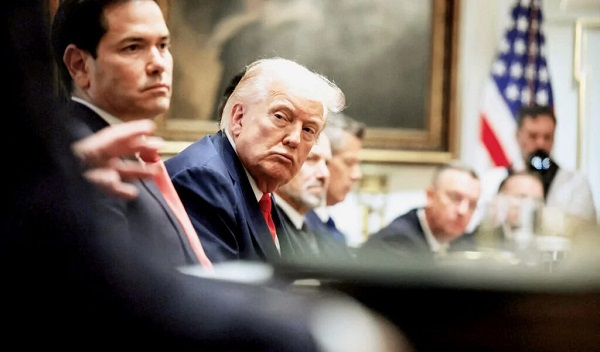
 Bruce Dowbiggin1 day ago
Bruce Dowbiggin1 day agoBrokeback President: We Can’t Quit You, Donald
-

 Energy1 day ago
Energy1 day agoPrince Rupert as the Optimal Destination Port for an Alberta Crude Oil Pipeline –
-

 International1 day ago
International1 day agoClimate contrarians have the president’s ear






